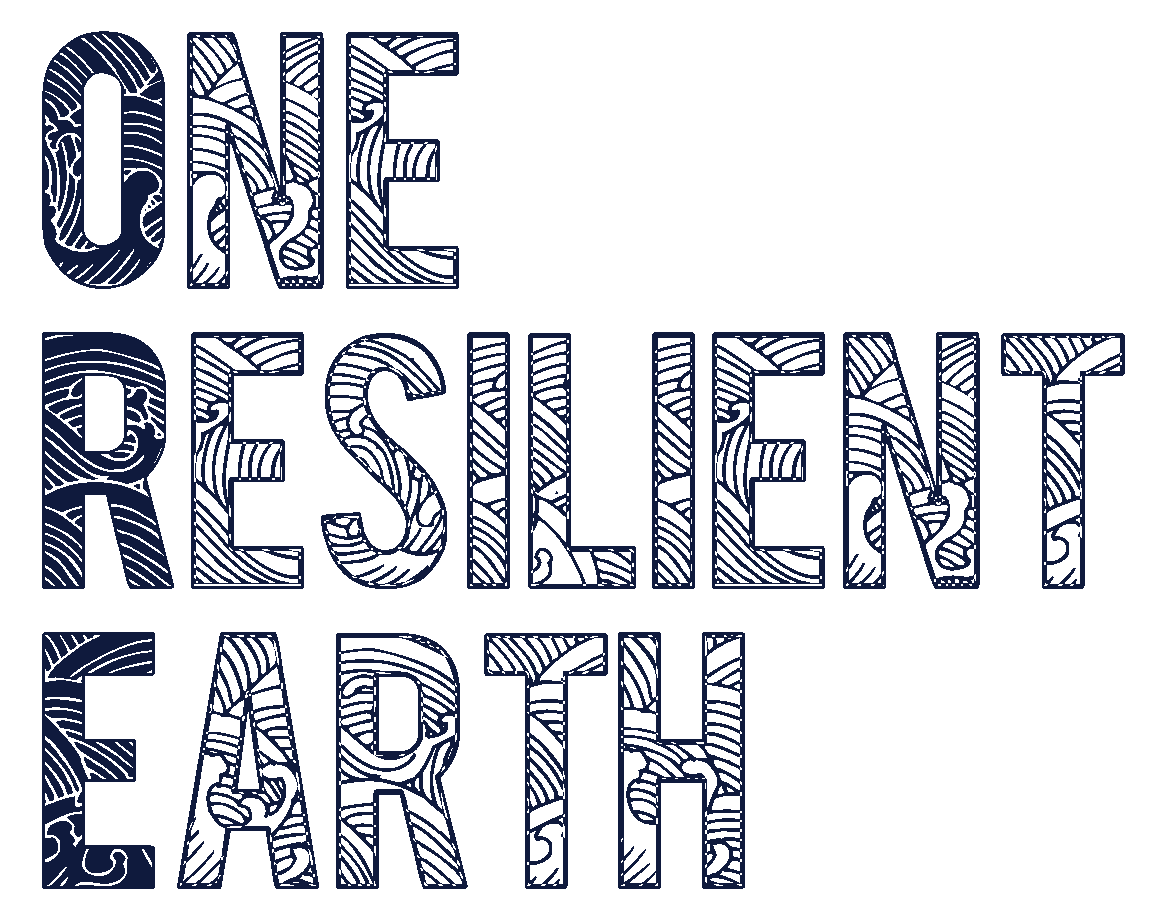The Raw Food for Thought Series transcribes spontaneous confessions and bold conversations on how people relate to our changing world and contribute to creating it everyday. Words from anyone are in the raw, to open new lines of thinking and celebrate all that is.
N: Oh hi, Laureline, I had forgotten you would call. I would not have answered your email but my husband said come on, we know her mother, I think you should get back to her. It’s just that I am not “écolo” at all [“écolo” is a popular french word for an environmentalist or someone having environmentalist views and – hopefully – practices]. Just so you know. In that context, I am not sure how I can help you or what I can tell you…
L: Oh… but please do not feel like you have to speak to me if you don’t want to…
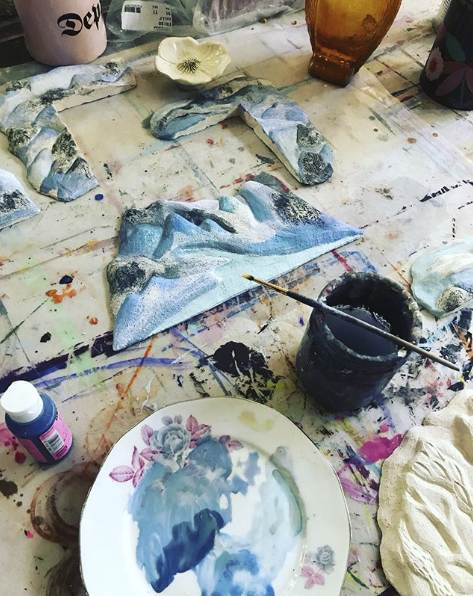
N: No… that’s ok, it’s not going to be too long anyway? I am really busy at the moment.
L: No, no, I just have a few questions about your work and your practice to use old material to create art, which I see as a form of regeneration, and which, I feel, is most needed in today’s context of environmental crisis. One Resilient Earth aims to foster the regeneration of communities and ecosystems, as one way to build resilience to climate change and the ecological crisis more broadly. Reusing what can be considered as trash to create new objects limits consumption and hence environmental degradation, while embodying creativity and an ability to regenerate. This way, it’s a form of art that is good for the environment.
N: Oh, but you know, I am not very much into environmental conservation. I try and eat organic food more and more, but sometimes I just buy things at the shop at the corner. And I very much work for the consumption society. I produce objects for each new season. That’s what I do to feed the family. Of course, I often feel it’s too much. Especially when I go to large commercial fairs. There are just too many objects everywhere, and I wish there would be less. But that’s still where I make my bread and butter.
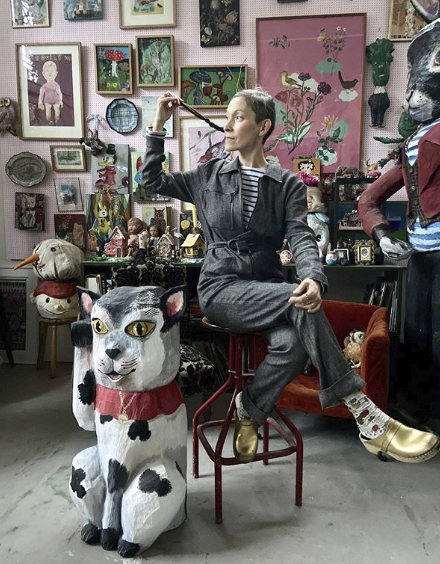
L: Actually, I also sometimes go shopping at the shop around the corner when there is no organic shop close by, or when I have no time. I am not even 100% vegetarian although I try to be… And what matters may not be that your work is undertaken with the intention of caring for the environment, but that in the end, it provides an example of a more sustainable use of natural resources and shows how beautiful objects and art works can be created out of old, discarded or mundane objects. So even if you do not think you are doing anything for the environmant, maybe you actually are…?
N: Well, what interests me is really about finding beauty in what we do ourselves. I find any object that we create ourselves to be more beautiful than what we buy as ready-made. And then it becomes a habit. It’s like when you have kids, and you keep the bottles caps, because you know that afterwards you can reuse them to create little figurines for the kids, and that it will make them happy…
L: Mental reflection to myself, I never kept bottle caps to create figurines for the kids although I stayed at home with them for 4 years. How could I miss that cool idea…?
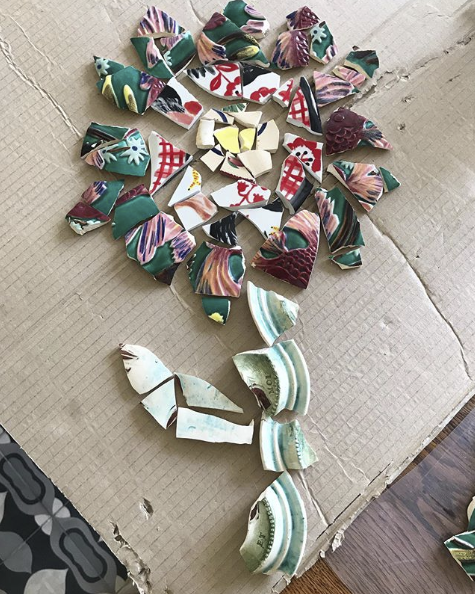
N: And then it is something I like to do and that comes naturally to me. I keep old things, so that I can reuse them later and create something new out of them. It is like the painted furniture I make, such as the cupboards and chests of drawers, out of old discarded ones. Or when I got the new house, maison Suzanne, the previous owner, an old lady had died and there were lots of old pieces of furniture. The sellers wanted to take them away, but then I said: “No no no, leave theme here!”. So I kept them and I painted them again. Everything can be transformed into something beautiful. In a way, it’s like a peasant who embellishes the house he lives in by putting in some love in what he does. It’s like a kid who is growing up and has old furniture in his room that he does not want anymore. He should just be given the chance to paint the furniture again. Just have this option to repaint, and do things freely. No need to strip the old paint off the wood and make it complicated. I never strip the old paint off. I just take my brushes and my paint bucket and I paint flowers on bright colors. Any old piece of furniture looks better with flowers and bright colors on it
L: Saying nothing but imagining my son Noah repainting all his furniture with bright yellow and green colors and a mixture of flowers, tanks and guns, and wondering whether it would really look better. Wondering then if I am just super conservative in my aesthetic tastes…
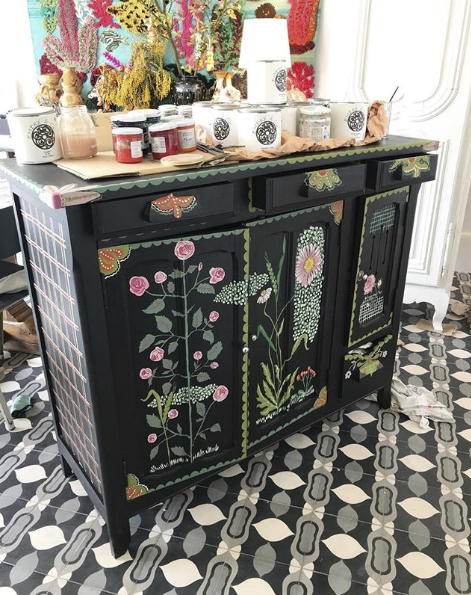
N: My daughter, Angele, who works with me is far more of an environmentalist. She only eats organic food, she buys all her clothes at the second hand shop,…. “Angele, do you want to come and talk to Laureline… No…” It’s that I did not tell her you were going to call… “It’s the daughter of a friend of your dad who works on environment and climate change and art…” I am not sure I’m saying it right… No, she does not want to talk to you, she says she is not écolo either, and does not carry out her work in response to environmental issues or out of environmental concerns…
L: Ok, No worries. But does she relate with your approach?
N: Angele,… do you ‘relate with my approach?’… she says yes
L: All right.
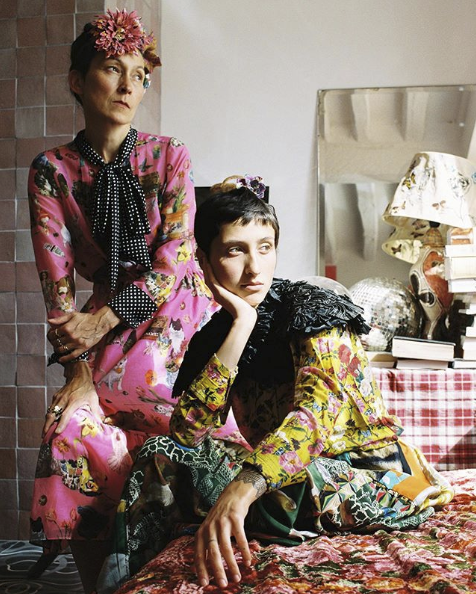
N: Maybe you’d be interested in the work of my son, Oskar. He creates installations with objects he finds in the street. Today, I feel it is no longer about doing art the way people used to in the 60s, when artists would use loads of bronze and other expensive material. In the end, it’s all about finding beauty in the nothing-at-all.
L: Instead of thinking of some hopefully clever question to ask, I was sent ten years back in Brazil, into the fascinating documentary Waste Land.
N: When I started as an artist, and for about 10 years, my partner and I would do art with cardboard boxes we found on the street. We did that because we did not have the means to do otherwise. We had to be creative to save money. Cardboard boxes were on the street, ready to use. We used them. I also started with my do-it-yourself approach to furniture because we did not have lots of resources. We had these makeshift pieces of furniture in what was very much a self-made interior. It gave more soul to the place, which looked like anything but a normal house. Actually, it would never look like any other house. It was also about building our own nest, and a place that looks like us. Maybe we also did it because we were art students. We did not care about following social norms and conventions. We just allowed ourselves to do whatever we wanted in our space.
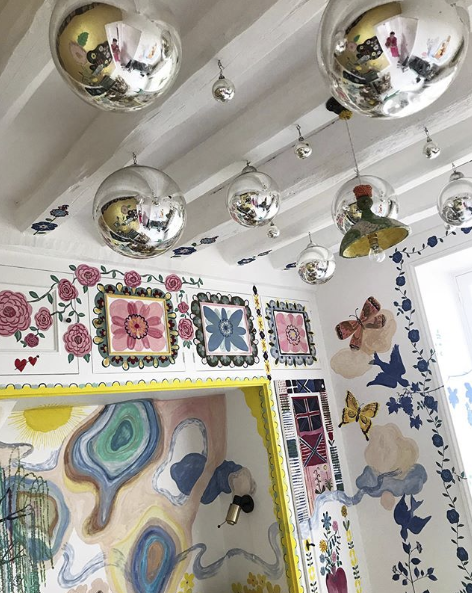
L: Maybe the biggest barrier is in people’s minds. If they could give themselves the same freedom as artist have or take, the world would look very different.
N: True. The world would look much more diverse. People should also keep some broken things instead of throwing them away. I keep everything. I recently kept broken plates, and I plan to use them to create flowers on my concrete floor. I will send the images to you if you wish.
L: Drifting off again, imagining colorful china flowers all over dull concrete floors and daring joyful drawings on the walls and furniture of every home. How would the world feel then? And as the interview finishes, I have to acknowledge that it may be high time that we try it out.
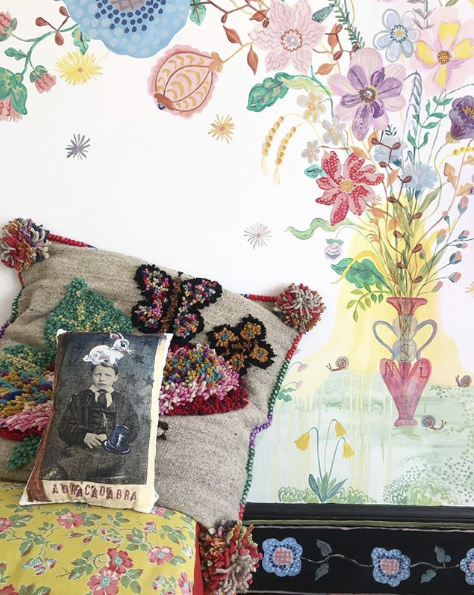
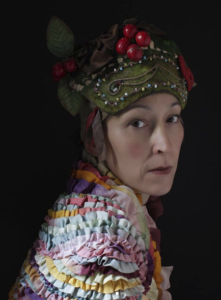
Nathalie Lété was born in 1964. She lives and works in Paris. She works in many ways, mixing different techniques and mediums, illustration, ceramics, textile and painting … She is inspired by her travels, but also by the mixing of vintage toys and old engravings of flowers and animals. Her work is colorful, naive and poetic, sometimes strange, to the point of tending towards art brut. Her world is nurtured by popular and folk art from her both origins (her chinese father and her german mother).
nathalie-lete.com
